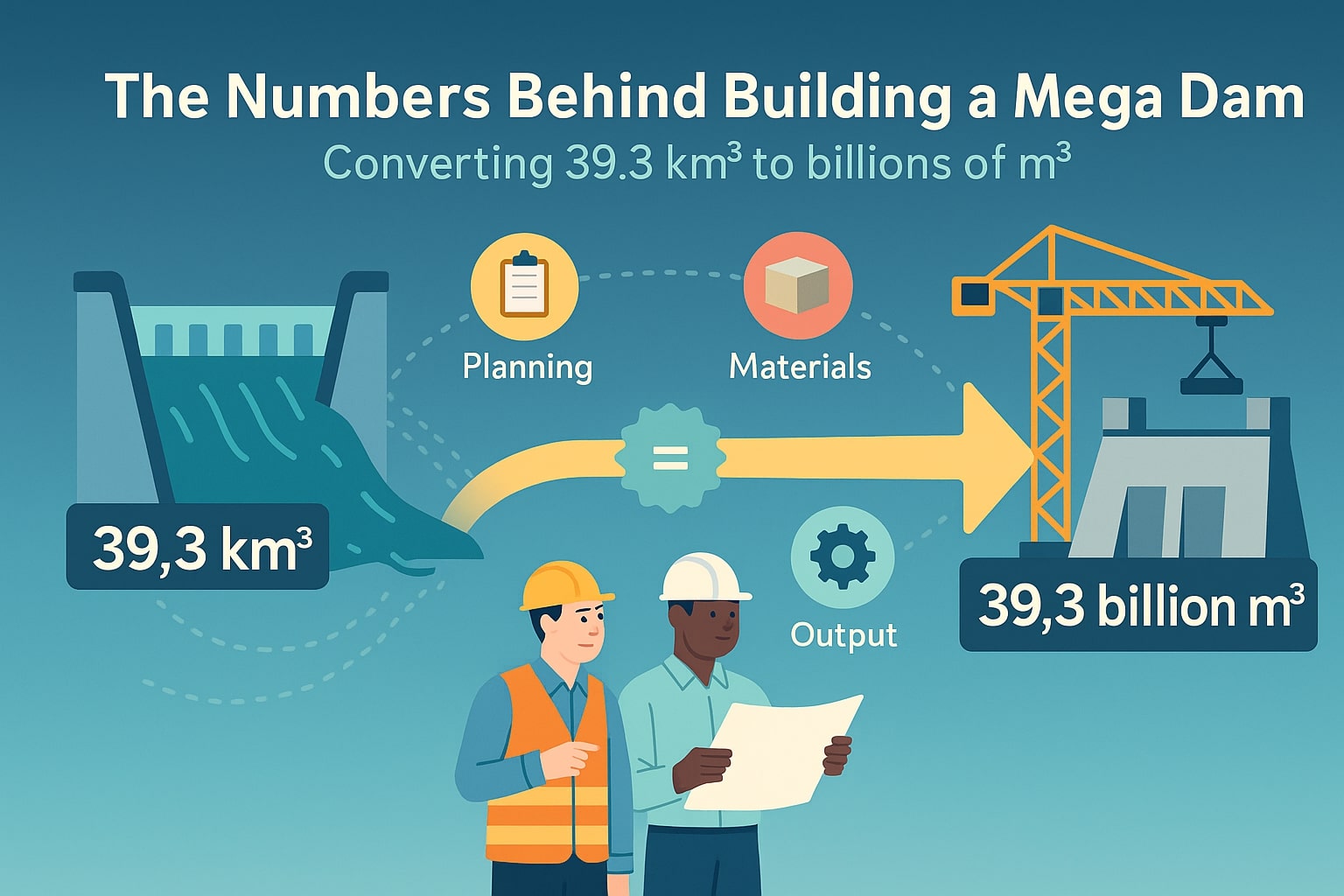cubic meter to cubic decimeter – How to convert m³ to dm³
Need to convert cubic meter to cubic decimeter? This is one of the simplest yet most important conversions in metric-based volume measurement. From scientific labs to water tanks and schoolwork, understanding how to convert m³ to dm³ ensures clarity in any calculation involving space or liquid volume.
If you’re converting other volume units too—like liters or gallons—our Volume Converter can help streamline the process across systems. You can also browse our Conversion Tool section for more unit-specific tools.

What Is a Cubic Meter?
A cubic meter (m³) is the base metric unit of volume, defined as the space occupied by a cube with sides that are one meter long. It's widely used in:
-
Engineering and construction
-
Logistics and fluid transport
-
Scientific measurement and environmental studies
1 cubic meter equals:
-
1,000 liters
-
1,000,000 cubic centimeters
-
35.3147 cubic feet
What Is a Cubic Decimeter?
A cubic decimeter (dm³) is a derived metric unit of volume. It represents the space within a cube with 10 cm (0.1 meter) sides, or one-tenth of a meter on each edge. It is:
-
Equal to 1 liter
-
Commonly used in science, especially chemistry and physics
-
Frequently seen in beverage packaging (1 dm³ = 1 L bottle)
It’s particularly useful for expressing smaller, measurable volumes within the metric system.
How to Convert Cubic Meters to Cubic Decimeters
This is a direct metric conversion: 1 m³ = 1,000 dm³
Formula: Cubic decimeters = cubic meters × 1,000
Example: 3.5 m³ = 3.5 × 1,000 = 3,500 dm³
No complex math is required—just a simple multiplication by 1,000 makes this one of the most straightforward conversions in the metric world.
Did you know?
-
A standard bathtub holds about 0.3 to 0.4 m³ of water, which equals around 300–400 dm³, or 300–400 liters. That’s enough to fill more than 30 one-liter soda bottles!
-
In chemistry labs, cubic decimeters are preferred for gas volumes under standard temperature and pressure (STP). For example, 1 mole of gas occupies 22.4 dm³ at STP—a concept introduced by Avogadro in the early 1800s.
-
1 m³ of sand can weigh over 1,600 kilograms, depending on moisture and compaction—making that 1,000 dm³ a lot heavier than you might expect in construction or landscaping work.
From Classrooms to Construction Sites
In middle school and high school science classes around the world, students first encounter the idea that 1 dm³ = 1 liter. This fundamental equivalence forms the foundation for understanding everything from liquid volume in recipes to measuring rainfall in weather reports.
Meanwhile, on construction sites, a supplier might offer a truckload of concrete in cubic meters, while the subcontractor pouring footings or columns might estimate usage in liters or cubic decimeters based on smaller modular designs.
This fluid relationship between m³ and dm³ shows how flexible and intuitive the metric system can be, no matter the scale—from a lab beaker to a building foundation.

Conclusion
Converting cubic meter to cubic decimeter is a vital skill across science, industry, and daily life. Since 1 m³ equals exactly 1,000 dm³, this conversion is as clean and efficient as it gets—no rounding, no approximations.
If you're juggling multiple units like liters, gallons, or cubic feet, our Volume Converter helps you switch between them seamlessly. For even more useful converters across categories, visit our complete Conversion Tool library.
With Jetcalculator, metric conversions like m³ to dm³ are instant, accurate, and always ready when you are.

